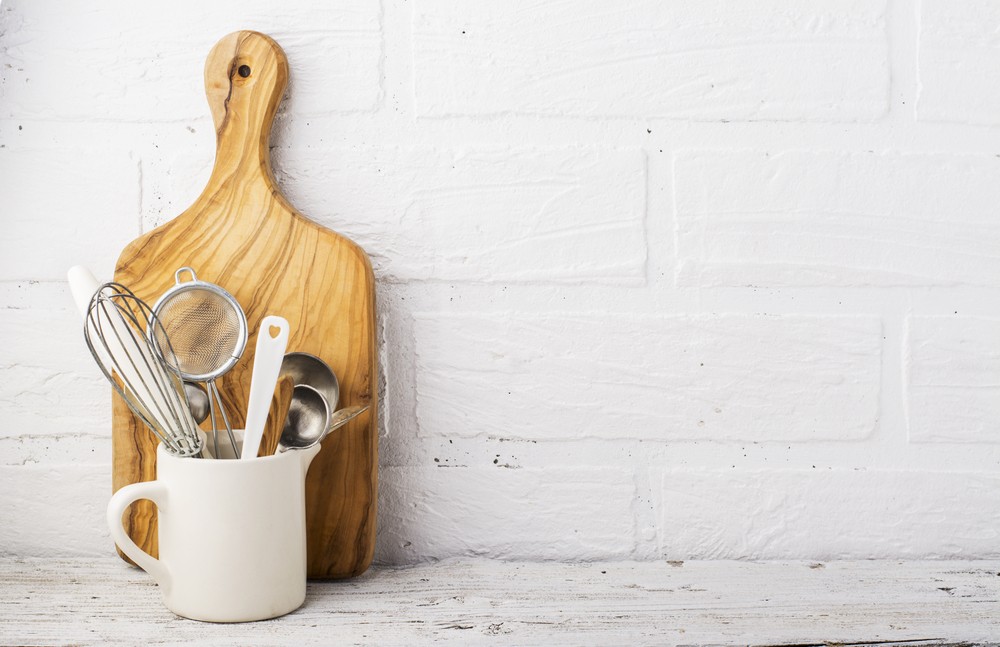Six kitchen tools and how to clean them properly
Other than carefully washing the raw ingredients for the dishes you will be cooking, you should also pay attention to the cleanliness of the kitchenware you are using, as bacteria like E. coli and salmonella are often found on kitchen utensils.
Change Size
 Cutting boards and other kitchen utensils can be a hotbed of bacteria, and improper cleaning can raise the risk of spreading germs to the food you eat. (Shutterstock/File)
Cutting boards and other kitchen utensils can be a hotbed of bacteria, and improper cleaning can raise the risk of spreading germs to the food you eat. (Shutterstock/File)
C
ooking at home is a convenient option to ensure that the foods you and your family eat every day are healthy and safe. Aside from carefully washing the raw ingredients for the dishes you will be cooking, you should also pay attention to the cleanliness of the kitchenware you are using.
Here are six kitchen implements you should always take care to clean thoroughly, as they can be a hotbed of germs such as E. coli and salmonella. as compiled by tempo.co.
1. Kitchen cloths and sponges
These two items tend to be a hotbed for bacteria because they are usually wet or damp. A study by the NSF International found that more than 75 percent of sponges and kitchen cloths harbor bacteria, including salmonella and E. coli.
It advised that these items are always squeezed after use to remove as much water from them as possible. To kill the bacteria, wash sponges and cloths in warm water or heat them in the microwave for 30 seconds, allowing them to dry naturally afterward. Also, try to change your kitchen cloth every day and change your sponges as often as possible.
2. Cutting boards
Cutting raw foods on the cutting board carries the risk of spreading germs to other foods. Raw meat and vegetables could leave salmonella behind, which can later transfer to other foods that touch the same cutting board.
As a precaution, use a different cutting board for preparing ready-to-eat meals, like salad, and raw ingredients. It is especially recommended to use a separate cutting board for meats and another for fish. After using the cutting board, wash it in warm water mixed with dish detergent and wipe it dry using paper towels. For best results, spray with a food-grade antibacterial cleaner, then let it sit for 5 minutes before rinsing with water and drying.
Get rid of a cutting board that is already covered with scratches, as remnants of food and bacteria will stay on them, making it harder to clean.
Read also: This is probably why your child gets sick too often
3. Refrigerator shelves
Your refrigerator's damp and dark environs makes it a greenhouse for breeding bacteria. Clean the shelves of your fridge every month, carefully taking out all the shelves and cleaning them with a clean sponge or a non-abrasive cloth using a mix of detergent and warm water.
To get rid of any smells, use 1 to 2 tablespoons of baking soda mixed with a liter of water, then wash and wipe the shelves until they are thoroughly dry.
Always try to wash all vegetables and fruits before storing them in the fridge.
4. Blenders
To thoroughly clean your blender, disassemble all removable parts and washing them after every use. Wash the parts inside a dishwasher or by hand, using a mix of water and dish detergent, allow them to dry and then reassemble. Be sure to wipe down the base and buttons with a damp cloth, too.
5. Can openers
Cleaning a can opener requires more than simply washing it. As a can opener directly touches food when it cuts off the top, there's a high risk that it can transfer any bacteria left on it from opening another can of food.
To clean it effectively, wash the can opener using hot water mixed with dish soap. Make sure there's no food left on the circular blades of the utensil. Then rinse, and let it dry naturally.
6. Spatulas
The area between a spatula's rubber head and handle could be a hotbed for germs. Clean it using a mix of soap and water, being sure to focus on the area. (kes)









